To accelerate the pace of discovery and exploration of the cosmos, a multi-institution team of astronomers and engineers has developed a new and improved version of an unconventional radio-astronomy imaging system known as a Phased Array Feed (PAF). This remarkable instrument can survey vast swaths of the sky and generate multiple views of astronomical objects with unparalleled efficiency. This image shows the 19-element phased array feed developed by the NRAO CDL.
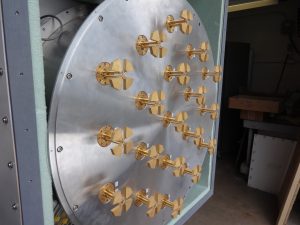
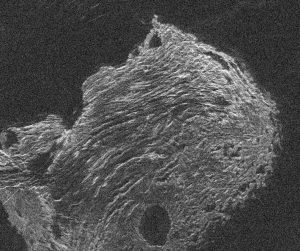
Mountains on Venus
This is a radar image of the planet Venus made by transmitting a signal at 13 cm wavelength from Arecibo and using the Green Bank Telescope (GBT) to detect the reflection off its surface. Brighter parts of the image indicate a rougher surface, while dark regions are smoother (on centimeter to meter scales). Many features, including mountain ranges, volcanic domes, and craters can be seen.
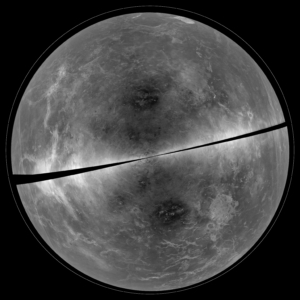
Venus as Seen in Radar with the GBT
A projection of the radar data of Venus collected in 2012. Striking surface features — like mountains and ridges — are easily seen. The black diagonal band at the center represents areas too close to the Doppler “equator” to obtain well-resolved image data. By combining the highly sensitive receiving capabilities of the National Science Foundation’s (NSF) Green Bank Telescope (GBT) and the powerful radar transmitter at the NSF’s Arecibo Observatory, astronomers were able to make remarkably detailed images of the surface of this planet without ever leaving Earth. The radar signals from Arecibo passed through both our planet’s atmosphere and the atmosphere of Venus, where they hit the surface and bounced back to be received by the GBT in a process known as bistatic radar.
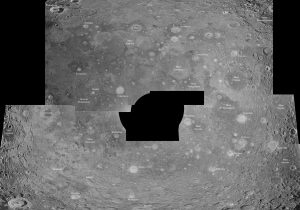
Radar Map of Our Moon
Radar maps of the Moon can look like optical images, but they represent the amount of energy reflected back toward the transmitter by any given part of the Moon’s surface. The Arecibo Telescope’s radar wavelength of 70 cm penetrates 10 meters or more into the very dry lunar surface. When picked up by the Green Bank Telescope (GBT), the radar shows us variations in the abundance of rocks larger than about 10 cm in diameter and differences in the chemistry of rocks that form the Moon’s crust.
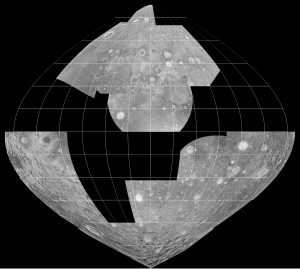
Craters in Radar
Partial mosaic of 70 cm radar images of nearside of the moon taken by the Green Bank Telescope (GBT) from radio waves transmitted by the Arecibo Telescope.
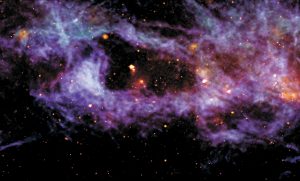
Stellar Outbursts Leave Behind a Galactic Shell
This enormous bubble was blown into the dusty, gas disk of our Milky Way Galaxy by winds and radiation from a few dozen hot, massive stars and the explosions of dying stars. Our Solar System exists in such a cavity. However, this galactic shell (GS 62.1+0.2-18) is 30,000 light years from Earth and measures 1,100 by 520 light years across. It appears so large on the sky that you could line 8 full moons across it. The bright yellow dots are clusters of young, massive stars in the foreground. The Very Large Array (VLA) and the Green Bank Telescope (GBT) traced, in detail, the cool gas in our Galaxy (colored purple, blue and green). The image also overlays radio emission of hot gas (colored orange) and heated dust, imaged in infrared by the Midcourse Space Experiment satellite (colored red).

